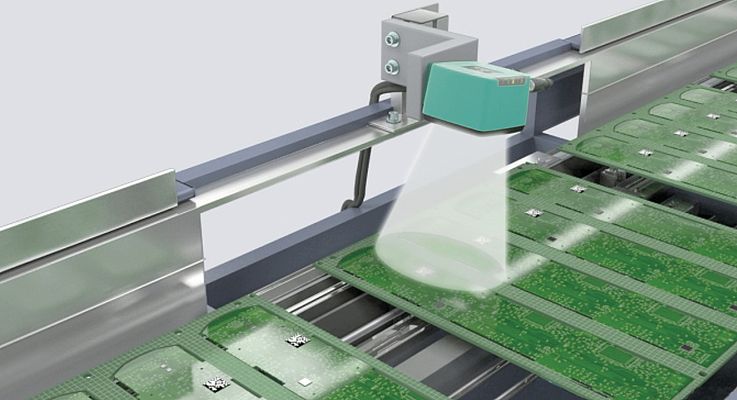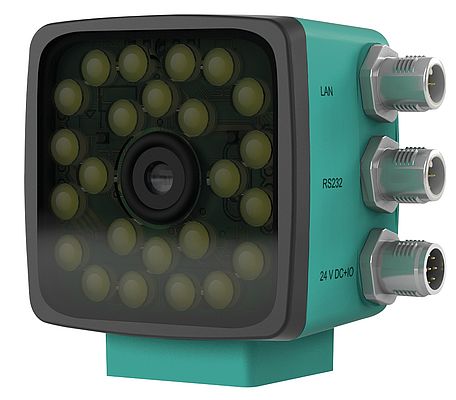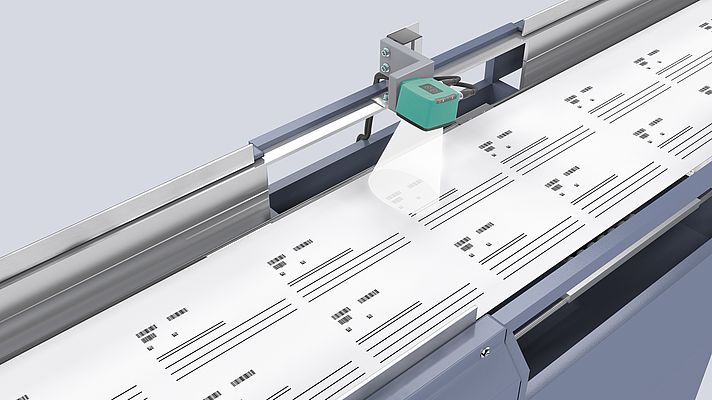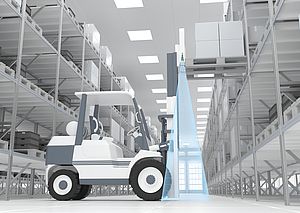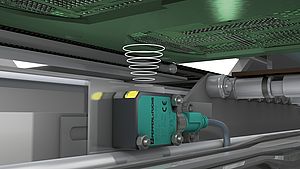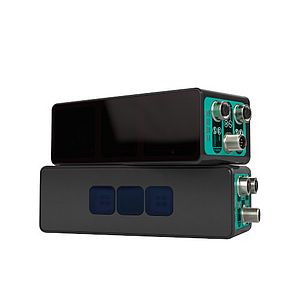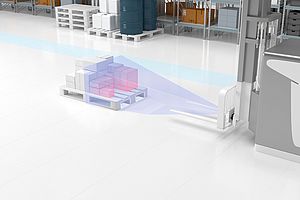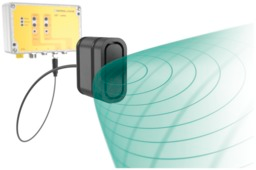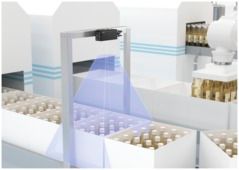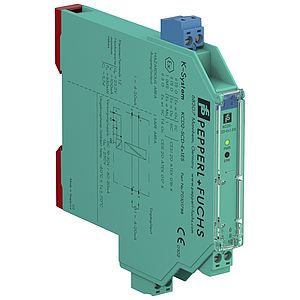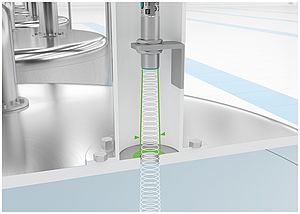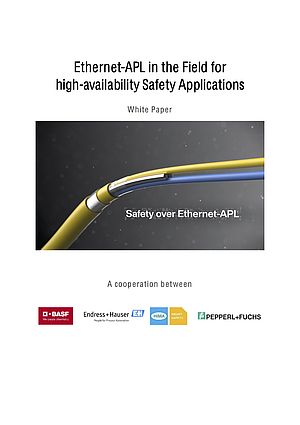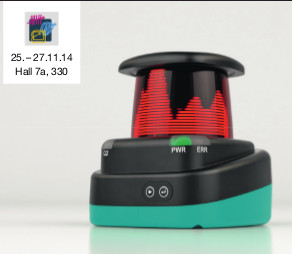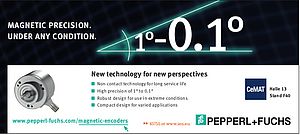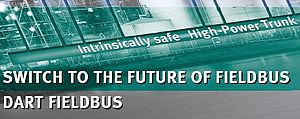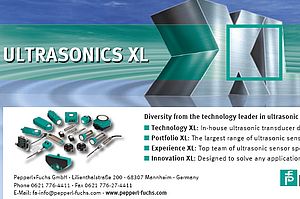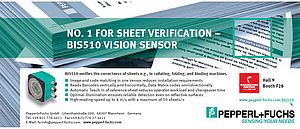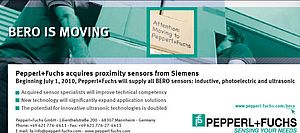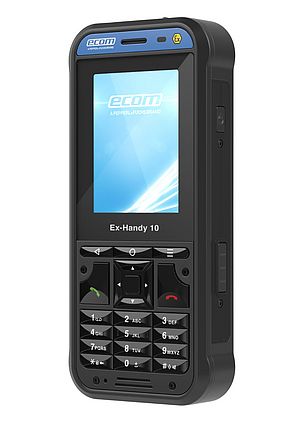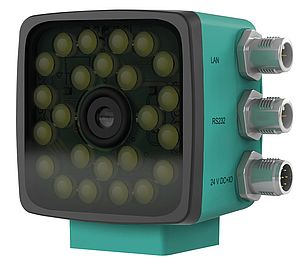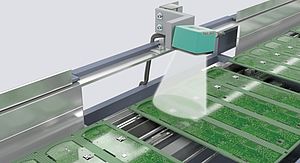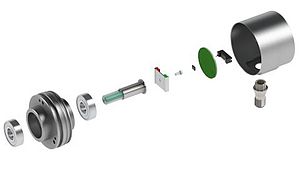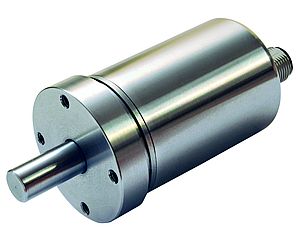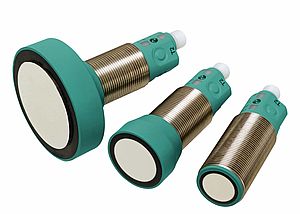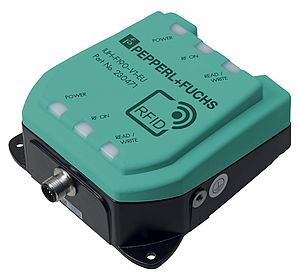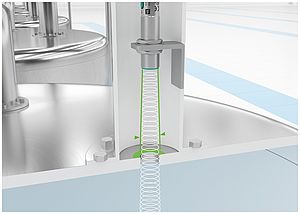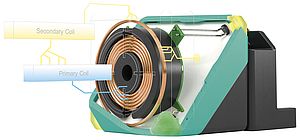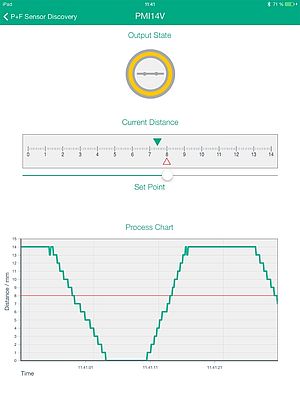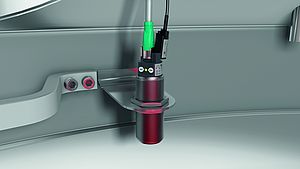As productivity levels and output constantly increase, the ability to read and decode 1-D and 2-D codes quickly and securely is taking on an ever-increasing importance in logistics, the flow of goods, and processing. The new camera-based code readers in the OPC120 series reliably suppress interfering reflections with their integrated polarization filter, delivering dependable results even when lighting conditions are less than favorable.
Drawing on state-of-the-art vision technology, countless extra functions, and a host of interface options including PROFINET, the devices provide all the functionality the user needs.
Almost all competitive companies are working to optimize their internal processes. As process speeds and feed rates increase as a result of these optimizations, the demands placed on devices for reading 1-D and 2-D codes do so as well. Due to the narrowing time frames for read operations, successful and reliable readings (from the outset) are becoming more and more important.. If they are not, companies face significant losses in productivity and other competitive disadvantages as a result of the impact on the flow of goods. Problems with optical sensor systems are often caused by reflections. These reflections can come from extraneous light or the sensor's own light source, or from unfavorable incident angles or reading angles. The situation can get even more challenging if codes need to be read from highly reflective or metallic objects.
Vision sensor equipped with special polarization filter technology
The new code readers in the OPC120 series from Pepperl+Fuchs are the latest generation of vision sensors, bringing together highly optimized system components such as a camera, flash, and evaluation unit in a single, compact device. The devices are designed for operation in a stationary position and read all common 1-D and 2-D codes such as Data Matrix, Code128 (A, B, C), Code39, EAN13, EAN128, INT 2 of 5, and Pharmacode. To ensure the devices can cater to all application scenarios in the best possible way, the code readers are available in two basic versions: The cost-effective OPC120W is ideal for a host of standard applications and allows readings to be taken at speeds of up to 6 m/s, or 30 readings/s. The OPC120P models are designed to meet all other requirements at speeds of up to 10 m/s or 100 readings/s, and to ensure reliable readings on reflective surfaces, metal, or film.
The device is equipped with special polarization filter technology that suppresses all reflections, enabling reliable readings to be taken even under the most difficult conditions. The OPC120P puts in an exceptional reading performance with its polarization filter, substantial depth of focus, and large reading distance covering a range of 70 mm to 180 mm. Drawing on these properties, the device not only tackles the challenges mentioned earlier with ease, but also frees users from the need to rely on complex additional measures. In scenarios where, with other readers, it is necessary to position the devices at an angle, use separate lights at the side, refocus the optics, or adjust various parameters, the OPC120P can read all codes with the same setting. This allows the user to adopt continuous, fast-moving processes and removes the need to adjust and program the devices.
Enhanced functionality brings additional potential for rationalization
The vision technology used in the new code readers from Pepperl+Fuchs allows the devices to simultaneously undertake a host of other tasks in addition to reading and decoding 1-D and 2-D codes. For example, in the case of food products and pharmaceutical products, a use-by date must be provided on the packaging. This text has to be present on the product, but due to its very nature, this information is constantly changing. On the OPC120, the "presence detection" function can be used to check the use-by date and other similar information. The gradient procedure used checks the number of gray value transitions, ensuring that the presence of the item can be verified while also making sure that the required tolerance in terms of variability is observed. An adjustable sensitivity threshold allows the system to be adapted to the specific detection task with a high level of precision.
In contrast to the presence detection function, the "logo detection" function is used to check invariant features such as company logos and graphics. Other useful functions and benefits offered by the device include the ability to read extended 1-D codes up to 200 mm via multiple images, and the scope to configure the reader using the "Vision Configurator" software. If users wish to read particularly long barcodes from a specified distance using a code reader, it may be the case that the entire code no longer fits in a single image capture. It is in this kind of situation that the ability of the OPC120 to take multiple images comes into its own: The device takes up to six images in succession, even on round objects where necessary, reassembles these individual fragments to form an entire code, and then decodes this code.
The code readers are easy to parameterize using the Vision Configurator software. Users simply import template images, select image sections, and define the relevant operations to be applied. Various evaluation functions can be executed on up to four different image sections per image capture.
A host of interfaces: PROFINET connection now also available
A wide range of different interfaces are available for the code readers. In addition to models equipped with RS232 and Ethernet TCP/IP, a version with a PROFINET connection is now also available as the latest equipment option. The special feature in this model is the integrated 2-port switch, which enables a direct onward connection to be made to the next PROFINET device in a linear topology. PROFINET provides full access to the code readers and their configuration. Using the additional digital I/O port, it is also possible to connect trigger sensors and rotary encoders for synchronizing the feed.
Summary
The camera-based OPC120 code readers from Pepperl+Fuchs provide solutions for both routine tasks and challenging reading applications, and can be used whenever codes need to be read reliably on reflective surfaces such as metals and films at speeds of up to 10 m/s and 100 cycles per second. The high level of process reliability is supplemented by numerous useful functions that make work easier for users and facilitate integration into the automation environment. The numerous interface options such as PROFINET make the OPC120 ideal not only for use in new machines, but also for modernizing and rationalizing existing systems.


